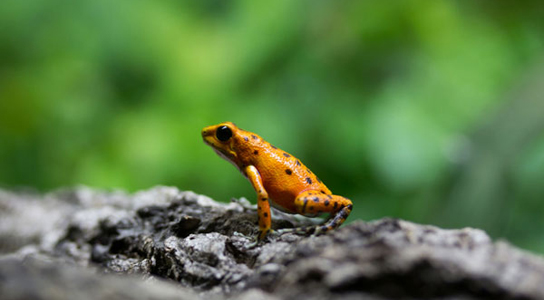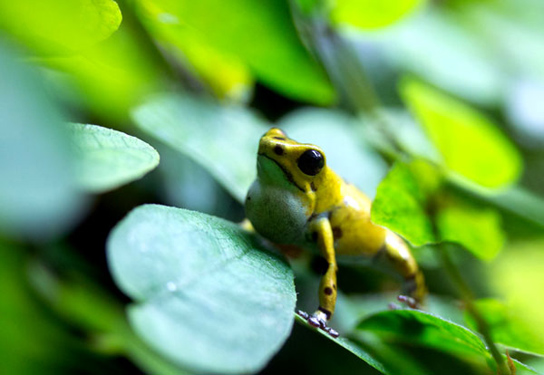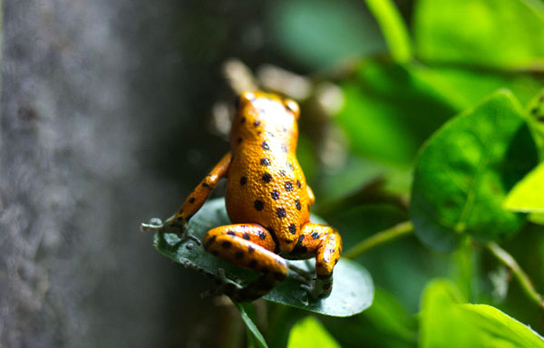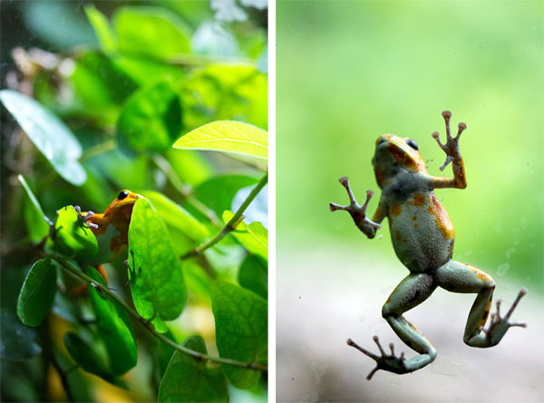
These colorful photos of two species of Dendrobatidae, from the Reptile House at the London Zoo, feature these critically endangered amphibians in all of their dangerous glory, since these are poison dart frogs, frogs whose toxic skin excretions are used in blowdarts.

The black-legged dart frog (Phyllobates bicolor) and the strawberry poison dart frog (Oophaga pumilio) are showcased in these photos. The IUCN lists 79 species of Dendrobatidae at risk. Of these 79, 19 are listed as critically endangered and facing a high risk of extinction in the wild, which include the skunk frog and the Bloody Bay poison frog that have had huge drops in their population.

In three generations, the Bloody Bay poison frogs’ numbers have dropped by 80% and the skunk frogs have lost 80% of their population in the last ten years. This decline is due to the loss of their habitats and dry spells have also hurt the frogs’ reproduction cycles.

Thirty more species are endangered and facing a high risk of extinction. Sixteen more are vulnerable and fourteen are near threatened. Some, like the splendid poison frog (D. speciosus) might have already gone extinct in their native ranges.
Most of these poison dart frogs are brightly colored, which display aposematic patterns to warn off potential predators. Their bright coloration is associated with the toxicity of the poison they excrete and the levels of alkaloids. When born and bred in captivity, Dendrobatidae don’t produce the skin toxins which they naturally produce in their native habitats. If measures aren’t taken to secure their habitats, most of these species will go the way of the golden toad (Bufonidae periglenes), which was recently listed as extinct.
1 Comment
pee